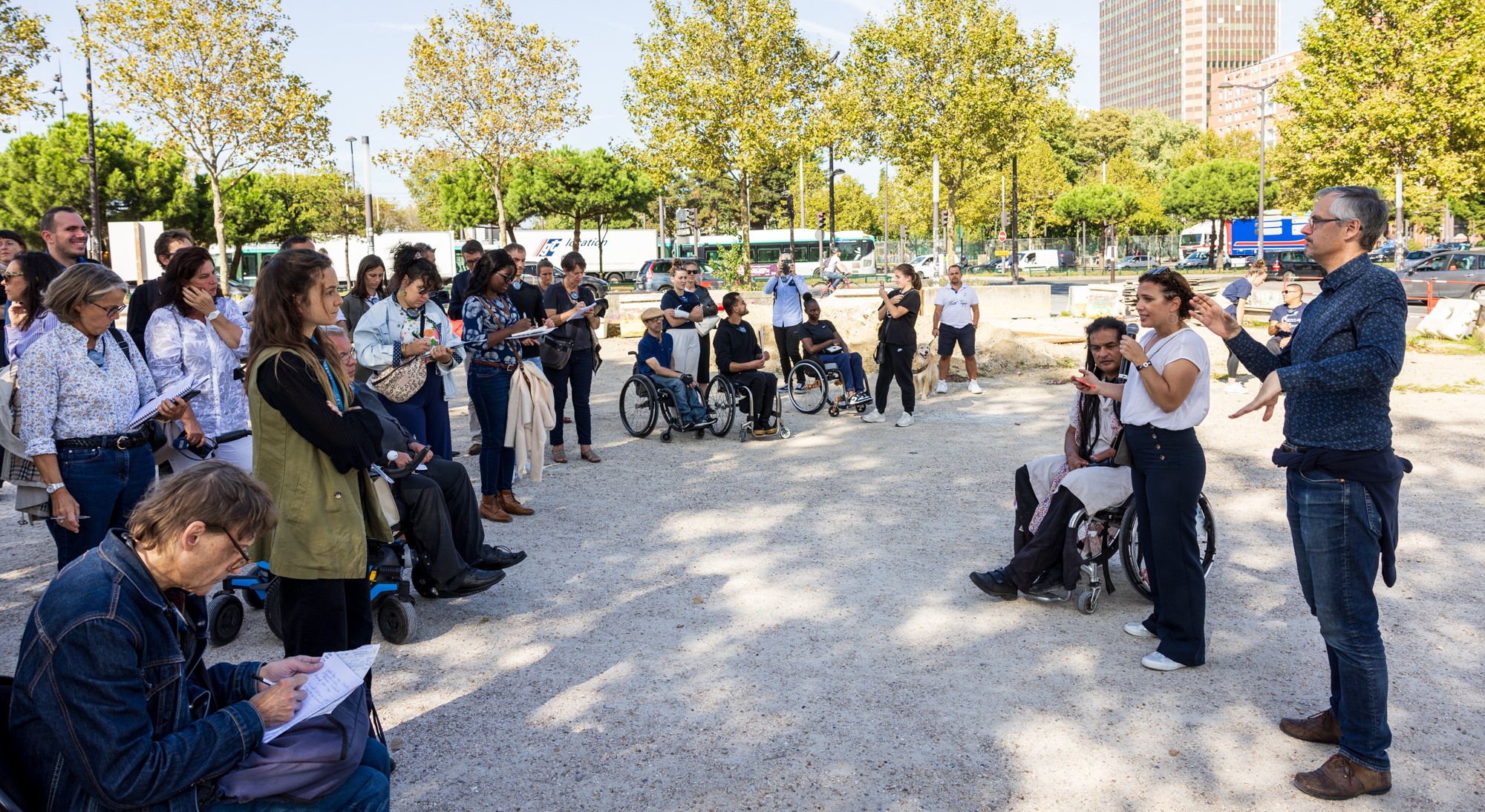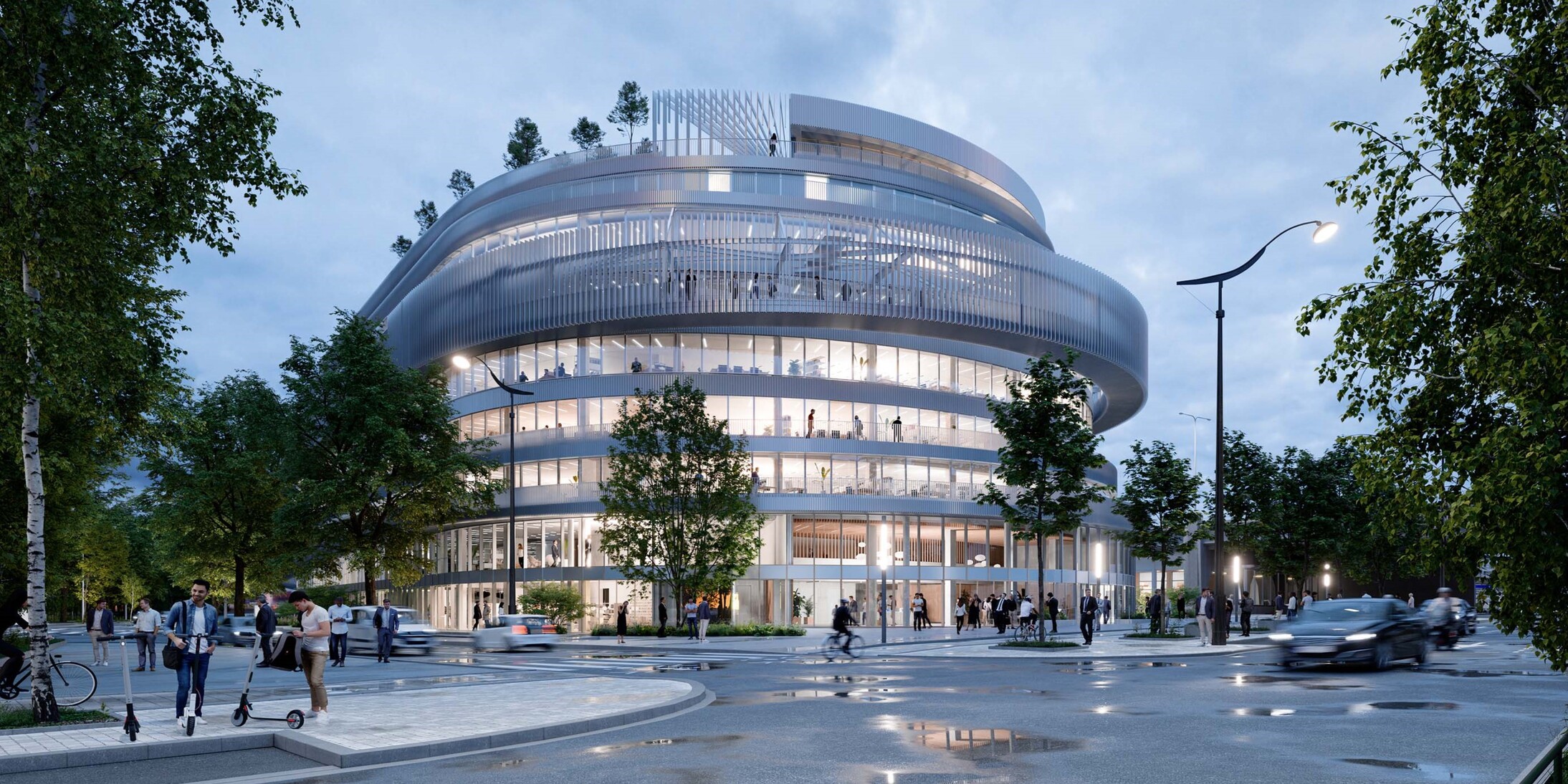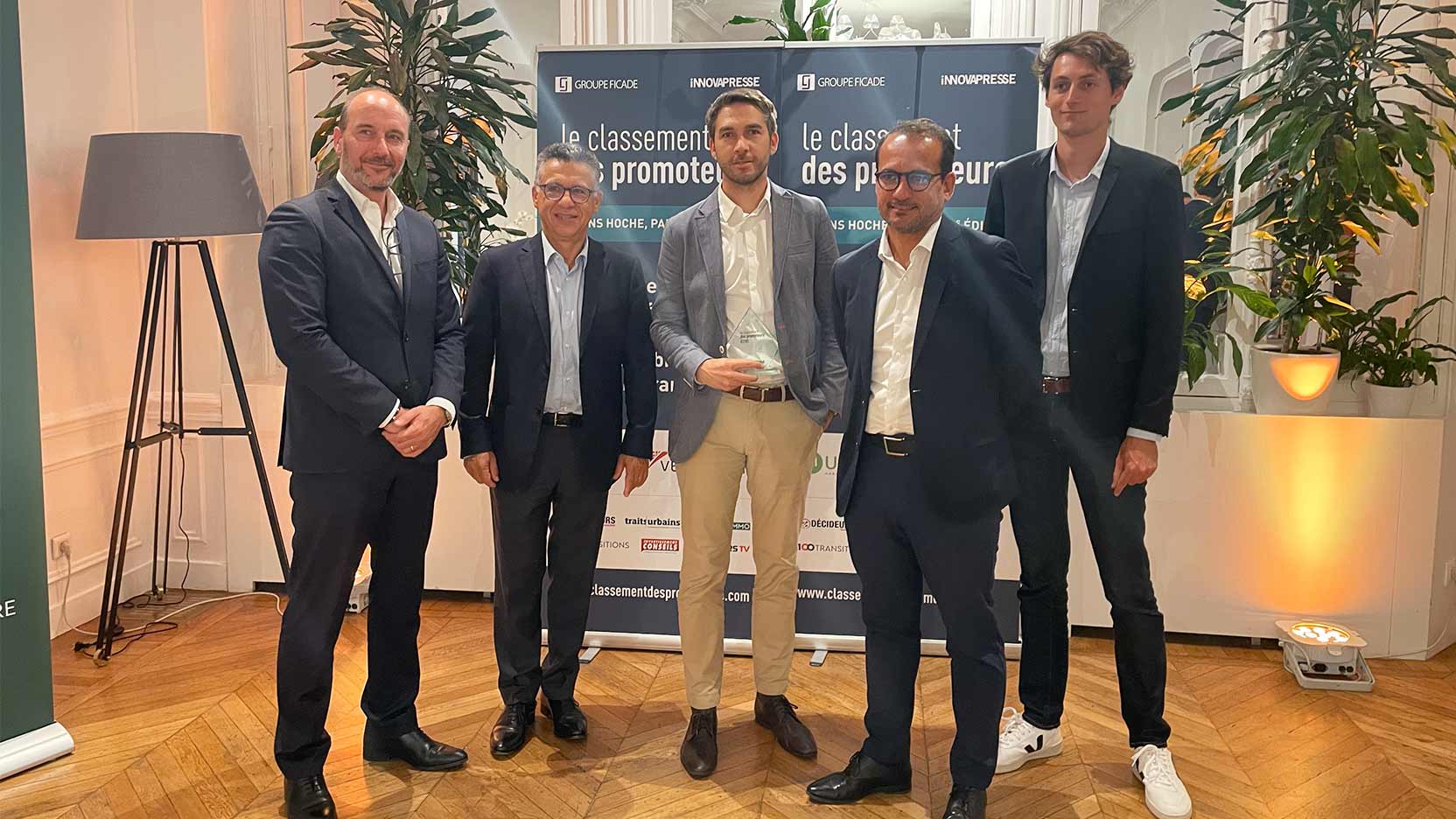The Philharmonie de Paris, in front of which a new landmark on the Paris landscape will soon be built, was the setting where a gathering of elected representatives, institutional figures, financial stakeholders, future neighbours and representatives of associations were to discover the neighbourhood of the future mixed-use project covering more than 30,000 m². The Cité Universelle, located at the Porte de Pantin in the 19th arrondissement of Paris, was planned together with the community activist, top-level athlete and Paris 2024 ambassador Ryadh Sallem. Its aim is to become a symbol of the city of tomorrow.
The Cité Universelle is a unique place in France, one providing on the same site a 1,000 seat sports complex that can host international competitions, 1,000 m² of shared rooftop gardens, a ****hotel with 109 accessible rooms, workspaces divided into six areas covering a total of 20,000 m², a co-working space of 1,100 m², a 1,300 m² corporate restaurant, a 300 m² shop, a health centre with eight medical consultation rooms, and finally the ‘Préfourrière de Pantin’.
This building’s special feature is that it is designed to be “exclusively reserved for everyone”. It has been designed to be accessible to all forms of disability, and deliberately aims to attract and bring together all sections of the public, be they sports enthusiasts, working people, visitors or local residents, with or without disabilities, to normalise differences and foster some extraordinary encounters.
The mixed programming of this development encompasses all the functions required in an urban environment, from leisure to work, accommodation, health, retail and public services, making it an active, useful asset for the city and its neighbourhood at all times. It also demonstrates that it is possible to design in an inclusive manner, whatever the purpose may be.
During this guided tour, the fifty people present had the opportunity to discover the site and explore the Cité Universelle quarter of the future. Sébastien Matty, Chairman of GA Smart Building, and Riyadh Sallem introduced the event by sharing this major project’s aims and recalling the origins of the project.
“We started from scratch. This was made possible by the Réinventer Paris call to tender for innovative urban projects. The spark was lit when we met Ryadh Sallem. There was a real feeling of shared osmosis with the architects and all the different stakeholders in the project. We were motivated by a shared ambition to defend a philosophy whereby taking into account the specific needs of some people enhances everyone’s experience. The remote controls, keyboards and even the phones were designed to meet the needs of people with disabilities and, ultimately, they have all changed our lives”, explains Sébastien Matty.
Although the most visible disability relates to the two million people in wheelchairs, also known as in French as PMR (Persons with Reduced Mobility), France currently has about 12 million people with officially recognised, mostly invisible, disabilities, (auditory, sensory, intellectual, psychological, etc.). The wide range of disabilities is truly huge and is too often overlooked. “It should be a matter of routine to take disability into account in an advanced, civilised country. This is not yet true in France”, says Riyadh Sallem.
The guests were then guided to the site of the “Marseillaise” in Paris, where the building will be located. They were welcomed on site by the musical show company R’Mélodies Roissy made up of artists with disabilities. They performed live their own versions of cult songs from the French repertoire to highlight the issue of integrating disability in cities, creating a warm, captivating atmosphere.
The tour then continued to the Place Olympe de Gouges in Pantin, where a demonstration and introduction to wheelchair basketball was organised by the CAPSAAA association on the Allée des Ateliers, providing a complete immersion in the project’s very DNA.
The Mayor of Pantin, Bertrand Kern, took the floor to talk about how to incorporate the Cité Universelle into the local area. “The Cité Universelle’s location at the Porte de Pantin makes it extremely close to our area. It is helping to change our image. This is great news, because it is time that the gates of Paris were beautiful, and this project is playing its part in that. The powerhouse that this site represents will play a dynamic role locally. This will make the area more human and soften its traffic impact.”











